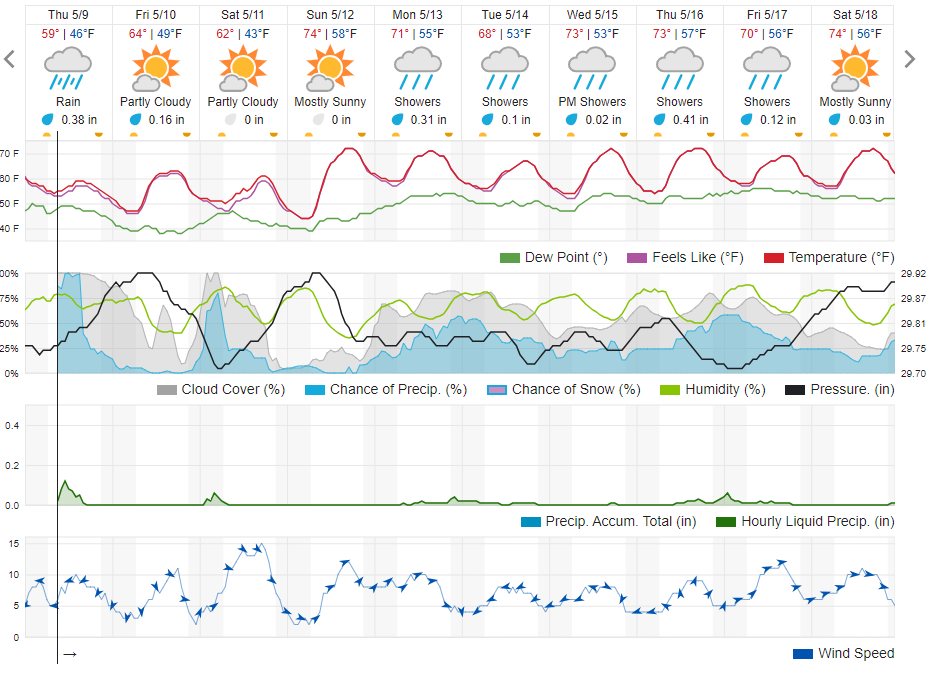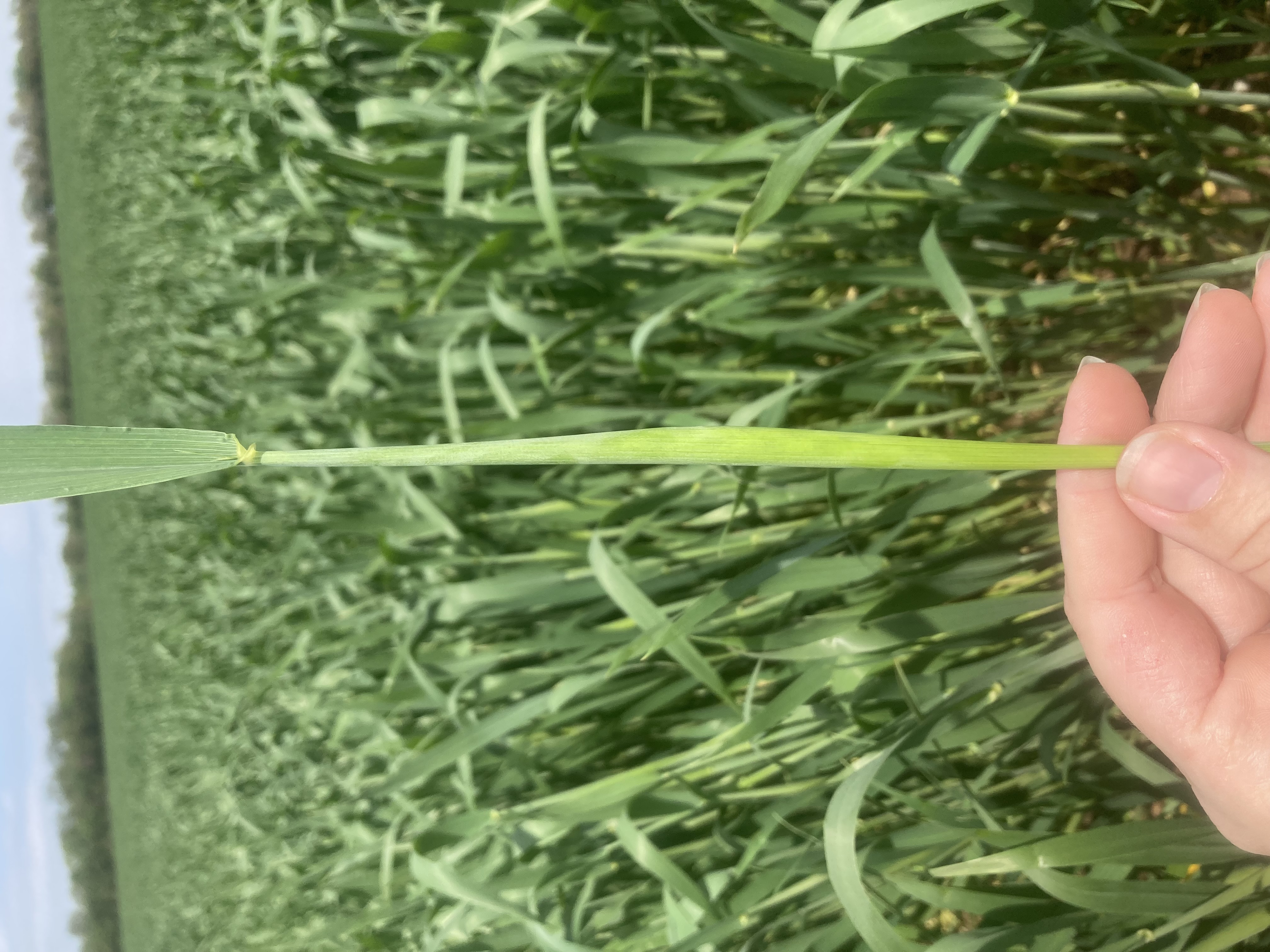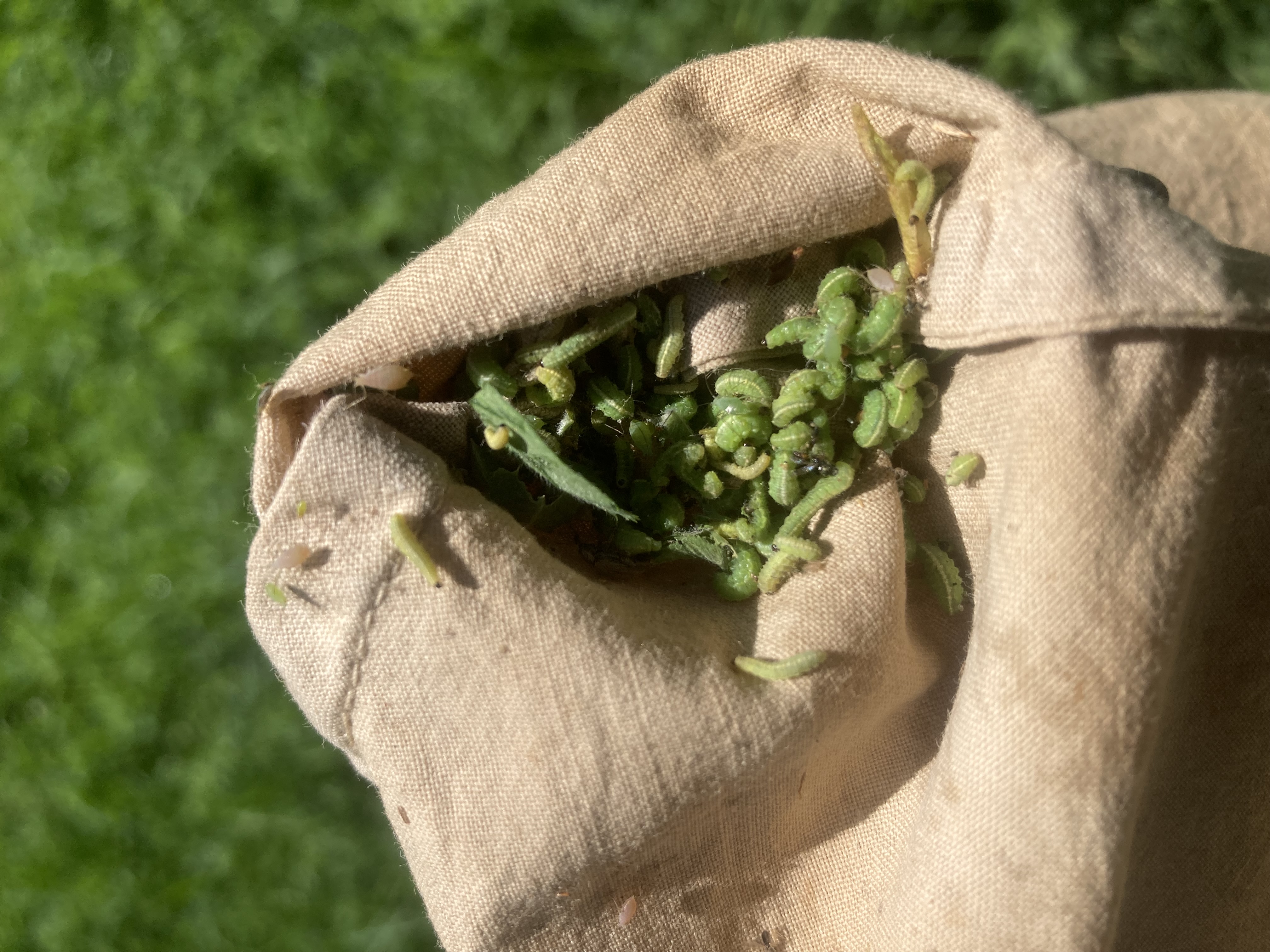Southwest Michigan field crops update – May 9, 2024
Crops are starting to emerge. Wheat hit Feekes 10 and alfalfa weevil feeding continues.

Weather
This past week saw high winds, hail and even tornadoes in southwest Michigan. No significant hail damage to crops has been reported. In the upcoming week, there will be several weather systems passing through, but they are all expected to have low (0.25 inch or less), scattered precipitation, so they may not affect planting as much as the rains we had this past week. Cooler temperatures will start today, May 9, and continue until the beginning of next week, at which point temperatures will return to higher than normal.


Crops and pests
Soybeans and corn are starting to emerge. The warm temperatures and rain have mostly been conducive to emergence, which led to fields emerging in just over a week. With cooler temperatures arriving, emergence will slow down and is projected to take about 10-12 days (based on degree-day accumulation from forecast temperatures in Constantine). Some fields received heavier rainfall this past week, increasing the potential for standing water. Good weather over the weekend led to a push in planting throughout the region, including some delayed-male planting of seed corn. As of the end of last week, corn planted is at 16% and soybeans planted is at 13%, according to the United States Department of Agriculture National Agricultural Statistics Service weekly crop report.
Winter wheat is at Feekes 10.0, which is commonly referred to as the boot stage. At this stage, the head is swollen in the leaf sheath. Watch for emerging seed heads and flowering soon to follow. The wheat head scab model predicts low risk of head scab so far. Heavier soils in the region have early powdery mildew symptoms, especially in lush stands. Wheat is 10-14 days ahead of normal this year, so this may be the year to try double-cropping soybeans for anyone considering it.

Potato planting is about wrapped up. There are only a few fields here and there that remain unplanted. Plants began to emerge at the end of last week, and emergence has continued with warm and generally sunny conditions.
Alfalfa weevil continues to feed on alfalfa. The threshold for early cutting of alfalfa at 16 inches or taller is feeding damage on 100% of stems and more than four larvae per stem. Young stands or short plants are not good candidates for early cutting, so if alfalfa weevil thresholds are hit, consider a spray application. The thresholds for plants 12-16 inches tall is more than 75% of stems damaged and more than two larvae per stem. For plants 9-12 inches tall, the threshold is more than 50% of stems damaged and more than one larva per stem.

Aphids have been found in wheat, well below thresholds for treatment. More species of aphids are expected to arrive at wheat fields in the upcoming weeks.
Black cutworm moths are present in the state. This week saw a large capture in Centreville, Michigan, with 46 moths. Bucket traps in Berrien (near Berrien Springs, Michigan) and St. Joseph counties have caught the following:
|
Date |
Berrien |
Centreville |
Sturgis |
|
4/8 |
0 |
2 |
1 |
|
4/15 |
0 |
12 |
4 |
|
4/22 |
0 |
16 |
3 |
|
4/29 |
4 |
10 |
3 |
|
5/6 |
5 |
46 |
0 |
True armyworm moths are present in the state, continuing to be concentrated in and around Sturgis, Michigan. Bucket traps in Berrien (near Berrien Springs) and St. Joseph counties have caught the following:
|
Date |
Berrien |
Centreville |
Sturgis |
|
4/8 |
0 |
0 |
0 |
|
4/15 |
1 |
0 |
0 |
|
4/22 |
0 |
0 |
14 |
|
4/29 |
0 |
0 |
20 |
|
5/6 |
0 |
0 |
14 |
.jpg)
Managing nitrogen in waterlogged corn, presented by Alex Lindsey of the Ohio State University, was the topic for the Michigan State University Extension Field Crops Virtual Breakfast this week. Lindsey highlighted critical management times for flooding and waterlogging. Two critical times are post-planting but preemergence and in early vegetative stages. Recordings of this and all the Virtual Breakfast meetings are closed-captioned and available at the Field Crops Virtual Breakfast webpage and the MSU Extension field crops team social media platforms: Facebook, Spotify, YouTube, Apple Podcasts and Twitter.



 Print
Print Email
Email